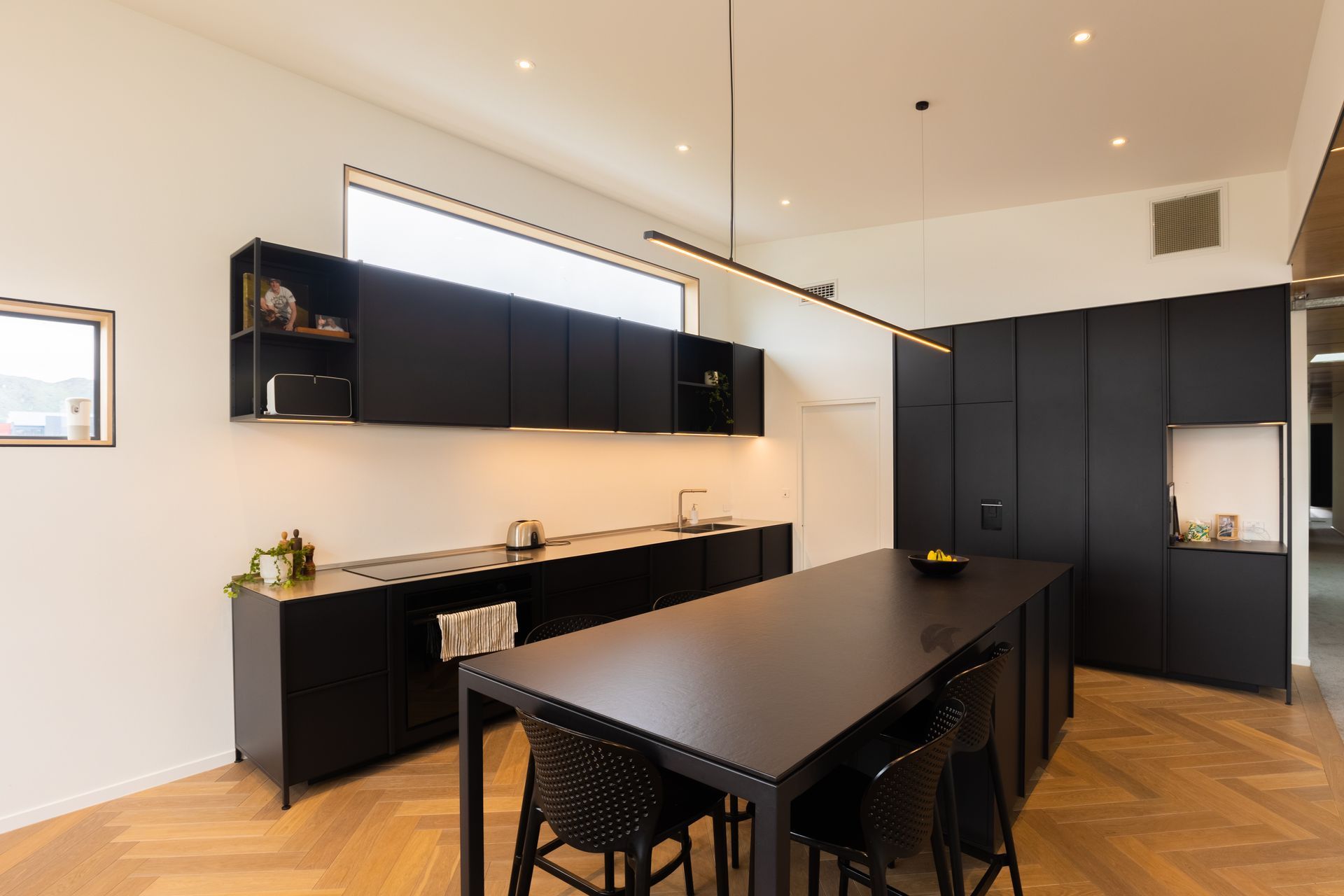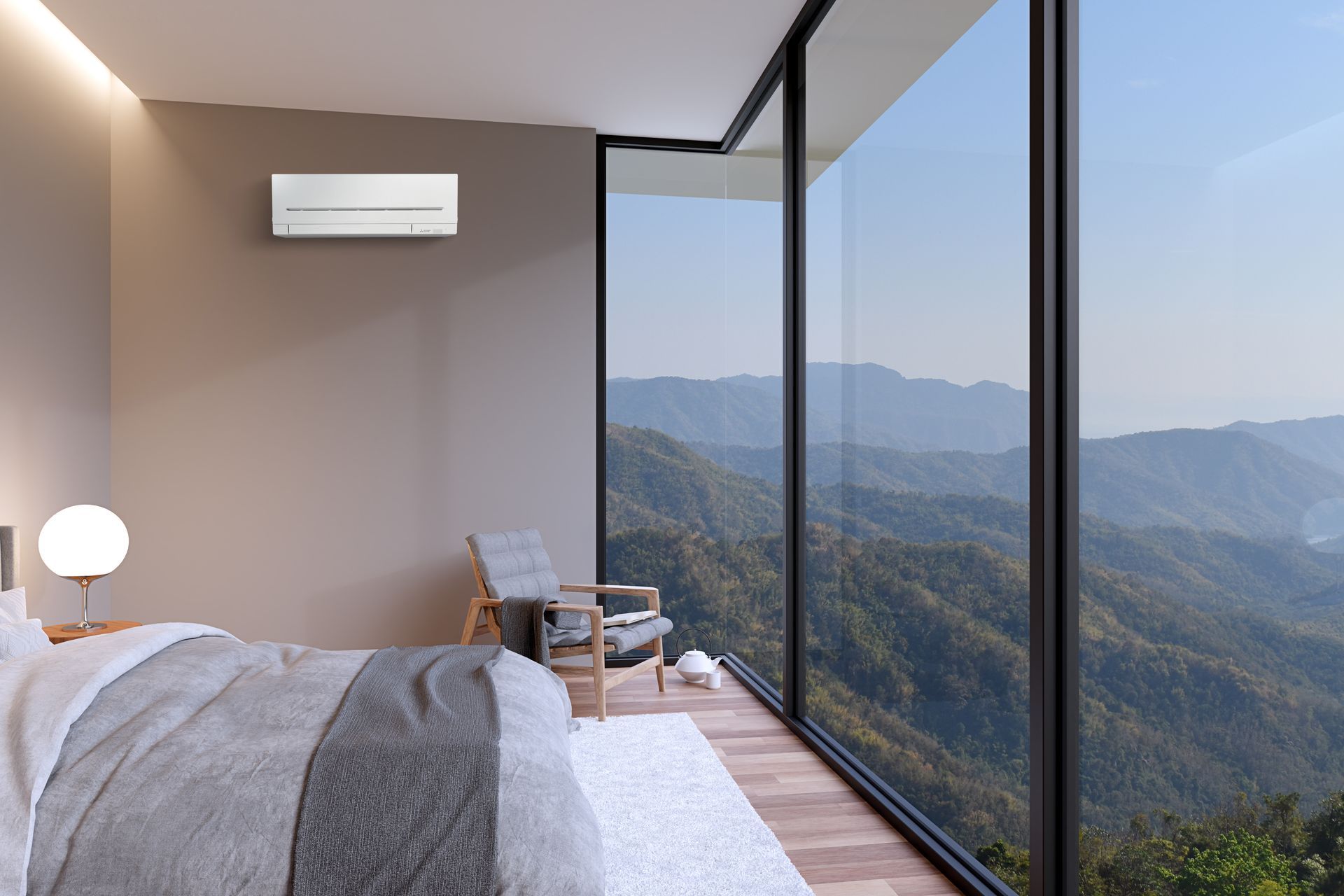How to design a home for year-round comfort using heating, cooling and ventilation

At the heart of the modern home lies the concept of comfort. Among its fundamentals, heating, cooling and ventilation rank highly. A comfortable home should offer warmth in the winter, a cool refuge in the summer and the promise of fresh, healthy air all year round. To design a home for year-round comfort, it’s crucial to start planning early, think long-term, personalise your preferences, and prioritise sustainability.
“While aesthetic details are a key part of the design process, how you will feel in the space is equally important. Interior climate, formed through space heating, cooling, water heating and ventilation, has a lot to answer for when creating a room’s ambience and use of a space,” shares Hannah Fleming of Mitsubishi Electric. “You can’t see it, but you feel the comfort.”
Since its establishment in 1921, Mitsubishi Electric has become internationally renowned for reliable electronics that help to create this invisible comfort. The ultimate goal is trans-seasonal comfort; that is, a heating, cooling and ventilation solution that will keep you comfortable through every season.

Start planning early
By starting to consider comfort in the home in the early stages of the design process, architects, designers and homeowners benefit from a wide range of options without additional building costs.
Hannah’s advice is clear: plan well in advance. “The earlier this is thought about in the planning process, the easier it is to integrate into your build and achieve a seamless design,” Hannah explains.
Many elevated elements impacting the comfort of a home require structural change, for instance, underfloor heating using an Ecodan Hot Water Heat Pump. This is far easier to incorporate within the floor structure of a new build.
When considering the options, it’s important to factor in the regional climate. As a distinctly long country, New Zealand faces extremely varied weather conditions. Some regions even experience both sub-zero winters and balmy, humid summers.
“We are starting to see projects where homeowners opt for an Ecodan system to service their domestic hot water as well as hydronic underfloor heating for the winter, while Mitsubishi Electric Ducted Air Conditioning offers cooling in the summer. They combine their ducted system with Lossnay Heat Recovery Ventilation to ensure pre-warmed or pre-cooled fresh outdoor air is circulated year-round too so their heating or cooling system does not have to work so hard,” Hannah shares.
A further important consideration is building regulations, which set new builds to a higher standard of air-tightness. While this is ideal in the winter, the lack of airflow emphasises the need for effective ventilation and cooling, particularly in areas prone to hotter summers.
“One extra benefit of our Lossnay units with Automatic Summer Bypass, is that when the unit detects that a space is hotter than desired using its onboard temperature sensors, it enters a mode to introduce cooler, fresher air from outside. As a result, the homeowner enjoys free pre-cooling without air conditioning or open windows,” Hannah adds.
If narrowing down your solution is challenging, Hannah recommends having a chat with Mitsubishi Electric. “Our experts can help provide the ideal system to integrate your heating and cooling preference – whether high walls, centralised ducted systems, radiators or underfloor as well as Lossnay ventilation system and energy-efficient domestic hot water.”

Think long-term
“How will you be using your home in a year's time? How about in five or 15?” Hannah asks.
These are important questions to consider when designing your home. While heating with wood-burning fires is a tempting option for a homeowner in their 30s, it necessitates a level of manual labour that may not be suitable in another 30 years’ time.
A mechanical ventilation system may be overlooked as a luxury, rather than a necessity. But when thinking long-term, the control of moisture and humidity levels as well as filtering of allergens in the home is essential to ensuring your health, furnishings and materials stand the test of time.
“We have seen new build examples where whole home mechanical ventilation was missed from the project and the new homeowners are surprised at how quickly the effects of dampness appear, plus a damp home is much harder to heat and could drive up your power bills when winter hits,” Hannah adds.
Over time, growing families may require extensions, or retired couples may desire a renovation. Each situation has its own unique requirements. For instance, reliable and fast hot water for a busy home, precise temperature control in each room for young children, reliably healthy air for the whole family, or additional heat pump units for a new living wing.
A long-term approach favours the integration of an instant, well-distributed heating and cooling solution. With a plethora of possibilities, a comprehensive solution for all outcomes is needed.
Mitsubishi Electric has total home comfort solutions to suit any project. The OmniCore Multi Room system provides heating or cooling that is customisable by room, and a Ecodan Hot Water Heat Pump can provide reliable, fast hot water and space heating. With the simple addition of the Lossnay Heat Recovery Ventilation system, it’s the ultimate in climate control and comfort.
With an OmniCore system, multiple indoor units can be easily connected to the same single outdoor unit at any time, offering a simple fix should you decide to extend your home in the future.
“For example, a system designed for four indoor units could be installed with only two indoor units connected to begin with, providing the flexibility to add up to two more rooms in the future as your family grows or as you have the budget to renovate – all connected to the one OmniCore outdoor unit,” Hannah explains.
“This means you do not end up with four large outdoor units cluttering up your exterior, which would be the case with a standard single room heat pump system.”

Personalise your preferences
When personalising your preferences, guide your decisions by feeling, functionality, cost, and aesthetics. Hannah suggests asking yourself several questions to personalise your design.
“Do you like the feeling of conventional or air-forced heating, or would you prefer a radiant option such as radiators or underfloor? Do you need individual room temperature control to keep everyone happy or to save on costs when rooms go unoccupied? Do you prefer a solution hidden from view, or is there a heat pump colour that will match your interior style?”
The types of solutions to consider include simple high walls, accessible floor consoles, hidden ducted and in-ceiling systems, as well as radiant hydronic radiators and hydronic underfloor heating. Many products can utilise smart technology to set individual zones to different temperatures at preferred times, controlled remotely through Wi-Fi.
The hardest part will likely be deciding your preferences. Once you have done so, reliable suppliers like Mitsubishi Electric will be able to assist in aligning product selection.

Prioritise sustainability
Even if a home has all of these elements, there is nothing comfortable about damaging the environment. When considering the way your home heats, cools and produces hot water, sustainability should be a priority, for the future of both the planet and your bank account.
The government agency EECA (Energy Efficiency Conservation Authority) has identified heat pumps as one of the most energy efficient forms of heating available in New Zealand. Typically, for every 1kW of electrical energy supplied, heat pumps produce around 4kW of heat energy for your home.
“This efficiency is represented as a COP (Coefficient of Performance), and a good heat pump can boast COPs of around four,” Hannah shares. “This is because heat pumps do not create heat; they simply move available heat from one place to another. The little electrical energy that is needed is predominantly used to run the compressor,” Hannah explains.
Heat pumps’ low emission, energy efficient technology can also be used for water heating and hydronic space heating.
The Lossnay Fresh Air Heat Recovery Ventilation system further supports the energy efficiency of heat pumps, with some models able to recover up to 92% of heat energy to pre-warm or pre-cool incoming fresh air. This ensures the heating or cooling system does not require as much energy to reach the desired temperature and that the 1kW consumed by heat pumps goes even further. Alongside this, a drier home with a healthy circulation of air is easier to heat, saving homeowners on their power bill all while reducing their carbon footprint.
To design a home for year-round comfort, Hannah’s advice is to talk to a trusted brand known for reliable, comprehensive, energy-efficient solutions. In doing so, you’ll save time, money, and gain valuable knowledge that will inform the best solution for your home.
“Ultimately, total home comfort ensures a better quality of life when it comes to living in and enjoying the home you’ve created.”
